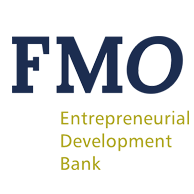


To be considered a success, COP16 will need strong financial commitments and implementation plans to support the Global Biodiversity Framework and safeguard our planet’s biodiversity.
The dedicated pavilion for Finance and Biodiversity highlights this sentiment, which will discuss derisking investments through transparency and accountability, market-based approaches for nature-positive outcomes, and mobilizing private capital through policy and regulatory reform. However, scaling up capital commitments for biodiversity is just one piece of the puzzle—having robust ESG processes at each stage of the project lifecycle is also crucial.
When making forestry and other large land use investments, overlooking the ESG elements of deals can result in unintended negative consequences such as biodiversity loss, displacement of local communities, and worker health and safety issues. To safeguard investment success, deal teams investing in forestry must firmly integrate both ESG and commercial aspects at all stages of investment. This often requires a carefully tailored investment approach.
Mobilising Finance for Forests’ Learning, Convening, and Influencing Platform has produced a state-of-the-art ‘ESG Guide for Forestry Investments’ to provide readers with comprehensive information on identifying, assessing, mitigating and managing ESG risks in forestry projects in emerging markets.
The ESG Guide does not contain policy or position statements, rather it serves as a comprehensive and user-friendly reference tool. It provides a go-to source for understanding the key ESG considerations that must be made at each stage of a forestry investment. The ESG Guide shares key definitions of terms and concepts and provides an overview and comparison of key ESG standards, certifications, and guidelines relevant to forestry projects. With the help of the guide, investors will understand which information they need to consult and which questions to ask to make informed investment decisions which are tailored to their institutional mandates, strategies and risk appetites.
The ESG Guide can advise investment teams in complex scenarios and different project sizes, at any stage of the investment lifecycle. For instance, if a deal team is considering investing in a large-scale natural forest management concession, the Guide would serve as a first point of reference to support the deal team in deepening their understanding of the ESG implications of such an investment. The Guide covers detailed information relevant to this case including:
Read the Guide here.
Please get in touch for more information on the ‘ESG Guide for Forestry Investments’, or to get a tailored presentation on how to use the Guide in your work.
***The information provided in this Guide is intended for general information purposes only and should not be used as a substitute for any form of financial or investment advice.***
-------